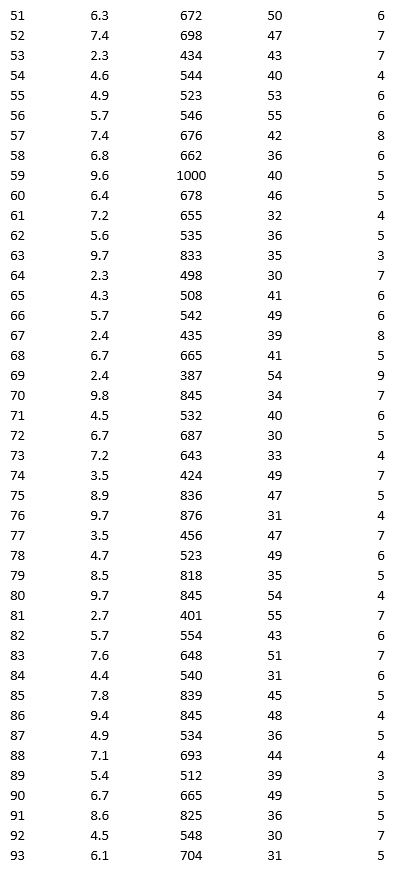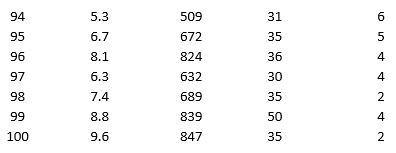As part of the quarterly reviews, the manager of a retail store analyzes the quality of customer service based on the periodic customer satisfaction ratings (on a scale of 1 to 10 with 1 = Poor and 10 = Excellent). To understand the level of service quality, which includes the waiting times of the customers in the checkout section, he collected the following data on 100 customers who visited the store.



For the above data, apply k-means clustering using Wait time (min) as the variable with k = 3. Be sure to Normalize input data, and specify 50 iterations and 10 random starts in Step 2 of the XLMiner k-Means Clustering procedure. Then create one distinct data set for each of the three resulting clusters for waiting time.
a. For the observations composing the cluster which has the low waiting time, apply hierarchical clustering with Ward's method to form two clusters using Purchase Amount, Customer Age, and Customer Satisfaction Rating as variables. Be sure to Normalize input data in Step 2 of the XLMiner Hierarchical Clustering procedure. Using a PivotTable on the data in HC_Clusters, report the characteristics of each cluster.
b. For the observations composing the cluster which has the medium waiting time, apply hierarchical clustering with Ward's method to form three clusters using Purchase Amount, Customer Age, and Customer Satisfaction Rating as variables. Be sure to Normalize input data in Step 2 of the XLMiner Hierarchical Clustering procedure. Using a PivotTable on the data in HC_Clusters, report the characteristics of each cluster.
c. For the observations composing the cluster which has the high waiting time, apply hierarchical clustering with Ward's method to form two clusters using Purchase Amount, Customer Age, and Customer Satisfaction Rating as variables. Be sure to Normalize input data in Step 2 of the XLMiner Hierarchical Clustering procedure. Using a PivotTable on the data in HC_Clusters, report the characteristics of each cluster.
Definitions:
Quarterly Payments
Quarterly payments are payments made four times a year at regular intervals, often used in the context of dividends, taxes, or loan repayments.
Interest Rate
This refers to the cost of borrowing money or the return earned on an investment, generally expressed as a yearly percentage.
Home Mortgage Loan
A loan used to purchase a residential property, secured by the home itself.
Monthly Payments
Regular payments made over a period, such as for loans or utilities, calculated on a monthly basis.
Q6: This slide illustrates the lesions seen in
Q13: An obese 50-year-old woman, whose height is
Q13: Meega airlines decided to offer direct service
Q20: Corporate-level managers use _ to summarize sales
Q21: A drug's trade name is used in
Q31: Salemach Corporation is a start-up company that
Q44: Within a given range of cells, the
Q46: Nonnegativity constraints ensure that<br>A) the problem modeling
Q49: _ refers to the scenario in which
Q56: Which of the following methods is used